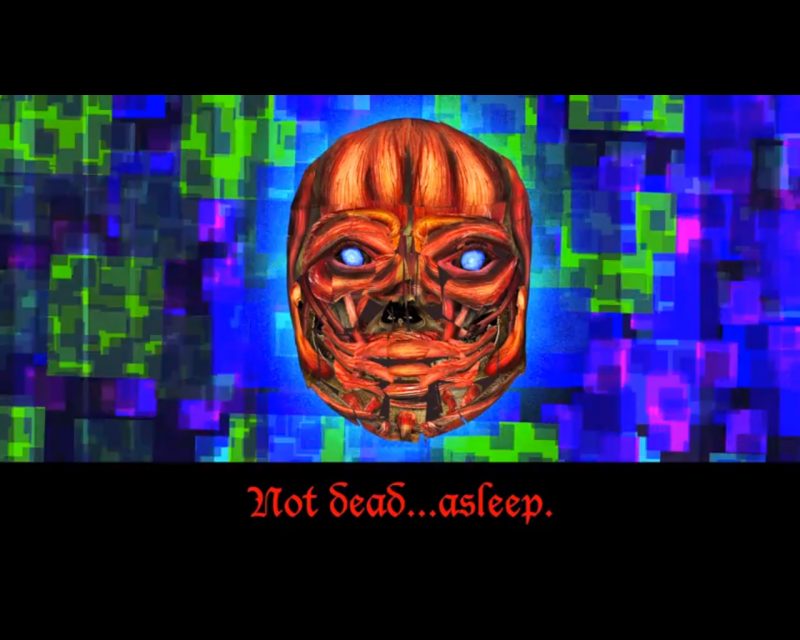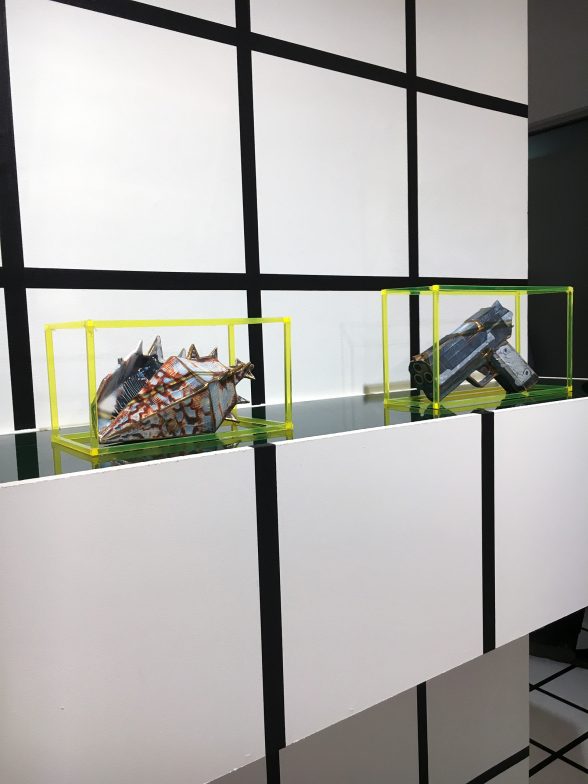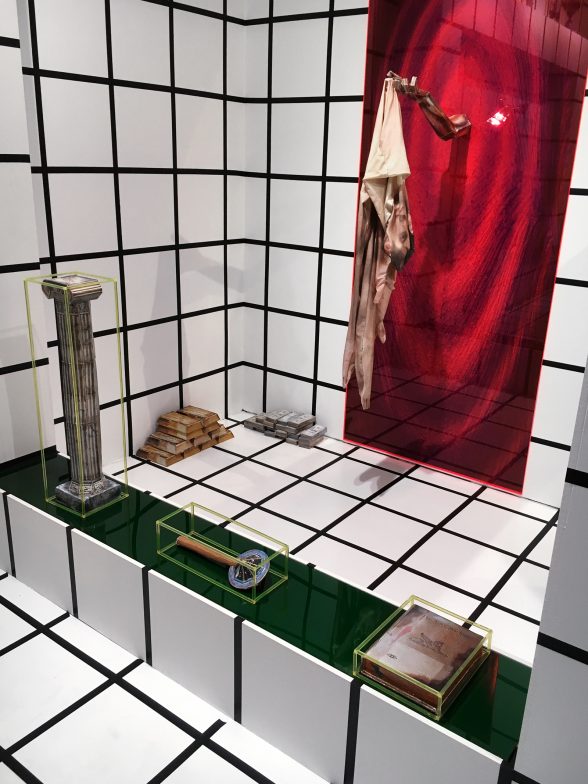Dreaming a Mystical journey
You find yourself in a desert, and before you lies a large structure that inexplicably resembles Philadelphia’s Drake Hotel, its yellow-brown form jutting suddenly from the sandy expanse. The heat beckons you into this sanctuary, where you find a pool. After taking a refreshing plunge into the deep end, punctuated by a David Hockney-esque splash, you are confronted by all manner of detritus and some gratuitous cultural references drifting below the surface. There is a laptop and a roasted turkey, as well as Nirvana’s iconic underwater, dollar-chasing baby, painting supplies, and a chainsaw, but most noticeably a figure, who you pull to the surface. After watching his heaving chest for a moment, you remove his underwear and skin before proceeding upstairs in an elevator.
We follow the nameless protagonist from his own point of view as he moves deeper into this digital world. After rescuing the submerged man and then physically appropriating his appearance, he leaves the body by the pool and begins to gather cryptic information and assorted items. It is around this time that the landscape begins to resemble the early 90’s PC game Myst, with its first-person perspective, interactive still frames, and enigmatic setting. The narrative laid out before us is meandering at best, and many of the symbols read as personal or subjective. As for a goal or destination on this expedition, it is anyone’s guess.
A few times per video segment, Lenker jogs us out of this CD-ROM nostalgia by cutting to shots of the disembodied, skinless head of the main character, which crops up to remark, sometimes quite opaquely, on the situations unfolding before him. Although slightly grotesque, our narrator’s literal facelessness is more an indication of his lack of identity than anything; he is an anonymous avatar drifting about a network of potential meanings, not unlike the average internet denizen. He might even be you or me.

Journeying throughout a series of locations, to a whimsical, pulsing, electronic score by Jay Plus, our travels take us to a beach, a dark wooded road, a sex club, some sort of dingy chemistry lab, and others. An arm reaches out to dissolve and collect what we encounter along the way, presumably adding these items to our inventory, in typical role playing game fashion. These accumulated objects then proceed to cross into the physical world, which is where the second half of Lenker’s project emerges.
The IRL Objects
Inside the Galleries at Moore, Lenker has laid a black grid across the white walls, and filled this matrix with handmade ceramic reproductions of the aforementioned discoveries from the digital world. Within the context of the video, the artist notes that these objects have life, but in this sterile setting, they remain still and solid. They aren’t perfect copies, either. Each piece consists of a series of flat, geometrical pieces, glued together with golden adhesive, and fitted with decals to mimic the color and texture of their exteriors.
The process used here mirrors the 3D modeling techniques that build depth in virtual spaces by piecing together forms out of flat tessellations and mapping these surfaces with still images to convey their tangible qualities. The seams, however, recall the ancient Japanese technique of kintsugi, in which cracked ceramics are repaired with obvious metallic lacquer to highlight their imperfections. This use of technologically distant methods and disparate concepts is central to the exhibit, as is the acknowledgement of inherent flaws and the shades of meaning that are lost in translation.

By fleshing out experiences that occur on either side of the screen, Nick Lenker demonstrates how in our current lives, both realms are perhaps just as relevant to our sense of identity. With much hand-wringing about the deleterious effects of social media and texting these days, Lenker forgoes any debate and presents each domain as a flipside of the same coin. By replicating parts of the external world in a digital environment, and then recreating these likenesses in physical space, Lenker unravels the mythology that computerized events are somehow inauthentic or insubstantial.
Anyone who has become constructively immersed in or fulfilled by a game, garnered valuable information from a website, or participated in meaningful social exchanges online knows that, although tangible reality has distinct benefits, computer-based experiences can be more than valid. As technology becomes increasingly integrated into our daily lives, it becomes less likely that our species will abandon the connectivity we have built. Instead we must focus on ways to mitigate its hazards and explore its boundless potential.
From this perspective, the handmade pieces in this show begin to appear rather bogus, despite their charm. Collectively they make for a fascinating installation, but individually, they are copies of copies, and their construction makes this glaringly obvious. Less clear, however, is their effect on identity.
Among the forty-or-so decaled ceramic sculptures, the artist has assembled quite a spread. As symbols which Lenker himself finds noteworthy, what could this grouping of objects mean to us? There is a torch, a small elephant, a handgun, the stolen pair of white briefs, and dozens of others.The only clear standout is the loosely draped skin of the pool man, printed onto spandex, and dangling near the rear of the exhibit.

Given the ambiguity of their intentions and relations to one another, this situation isn’t unlike wading every day into the expanse of semiotic overload that we take for granted. As an array of open-ended images, the whole encounter reads like an average day full of advertisements, memes, games, cultural remnants, memories, opinions, idle chats, fictions, and facts. The real key here might be the stolen skin. Other than serving to acknowledge the outward personas we inhabit during social interactions, it also reminds us that the bulk of what we believe and cherish – even that which we disdain or despise – is built on a foundation of meanings we have garnered from others.
As they say, we stand on the shoulders of giants. The world in which we live would not be possible without those who went before us. As the internet continues to consolidate information, we paradoxically find ourselves compartmentalized and overwhelmed at the scope of it. It would seem that we are nearing a precipice, and that balance is key at these new heights. We must learn to juggle not only our own dualities and contradictions, but to move upward with the knowledge that, no matter how lofty or isolated it may feel, we are still a product of our environment, and we do not stand alone.
Nick Lenker is speaking about his installation on Thursday, October 12 at 6:30 at The Galleries at Moore.





